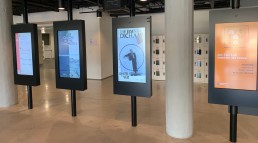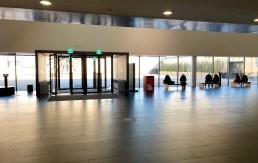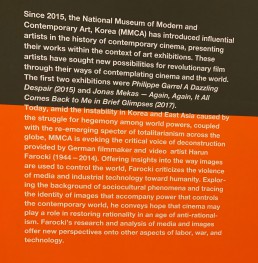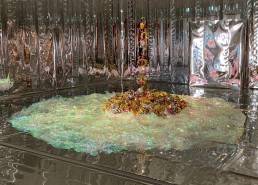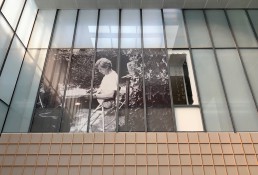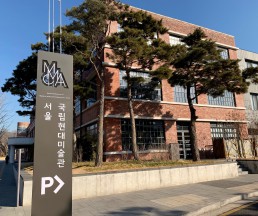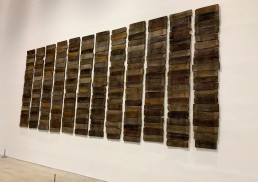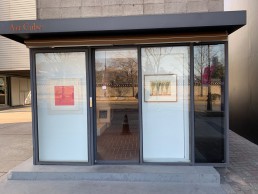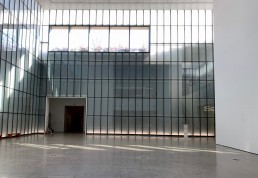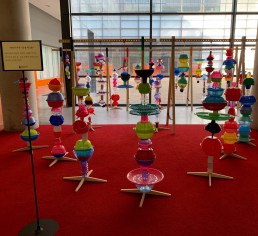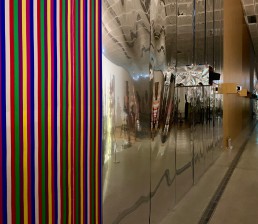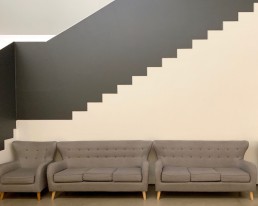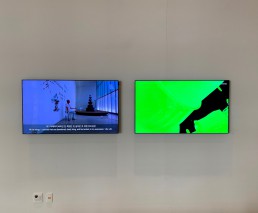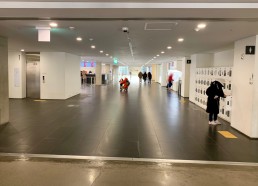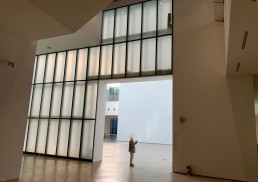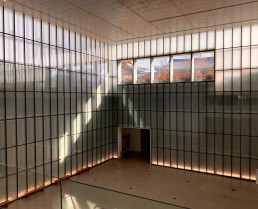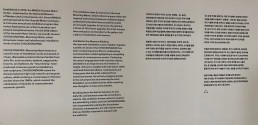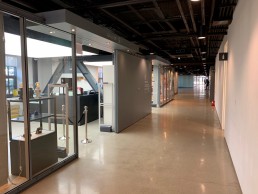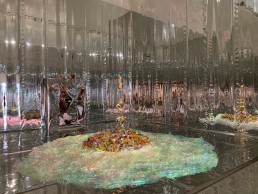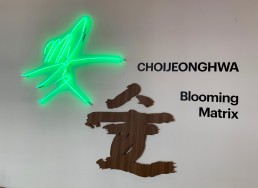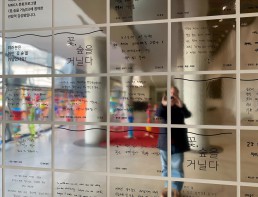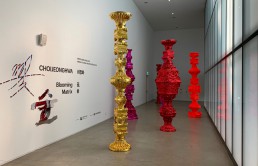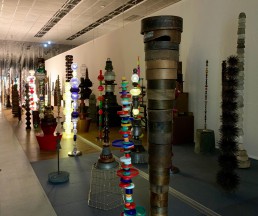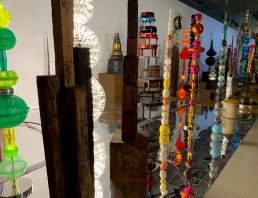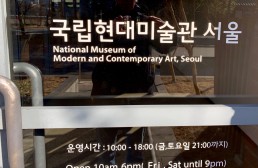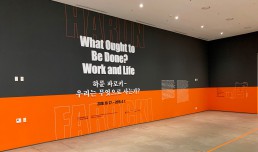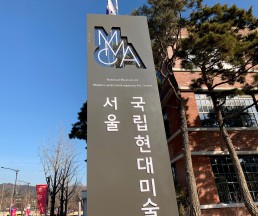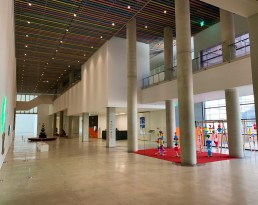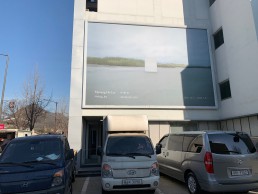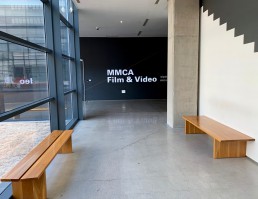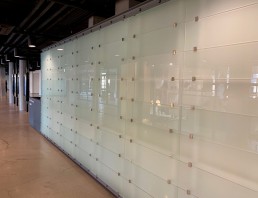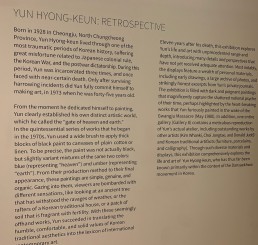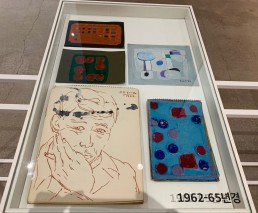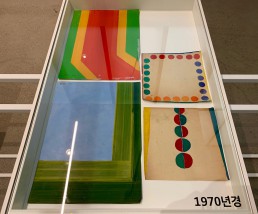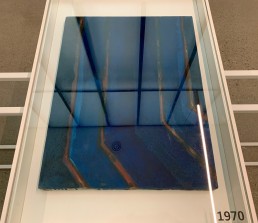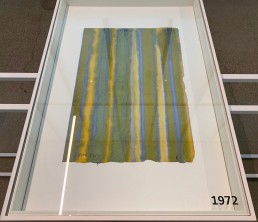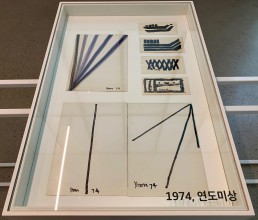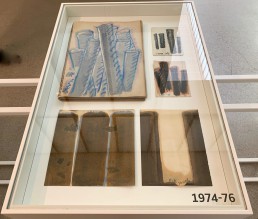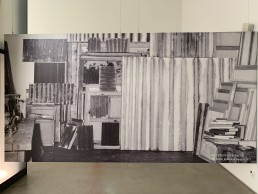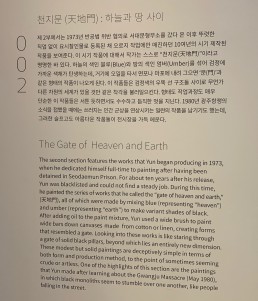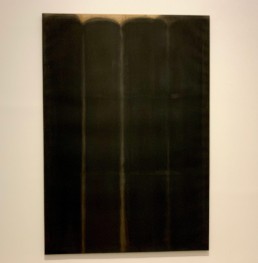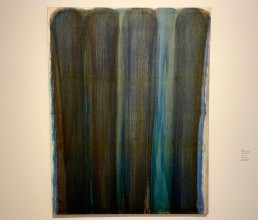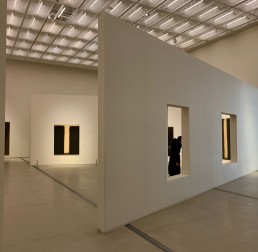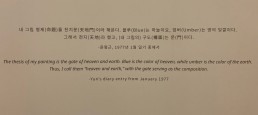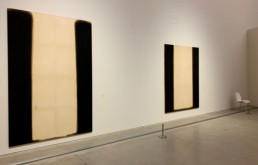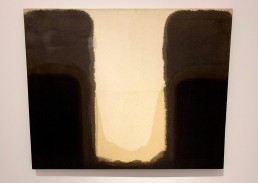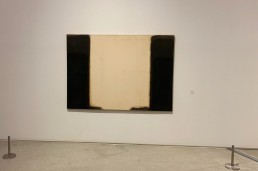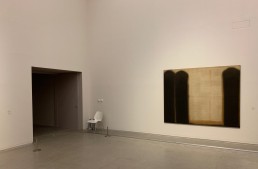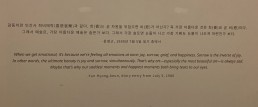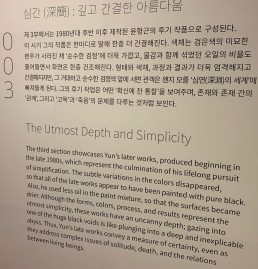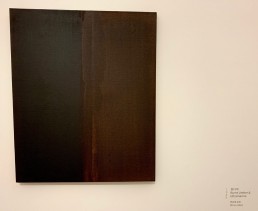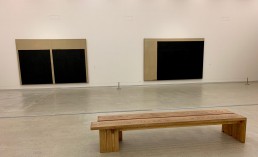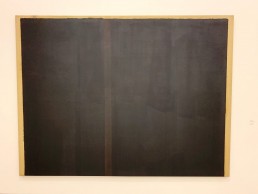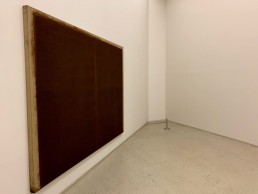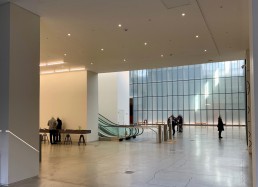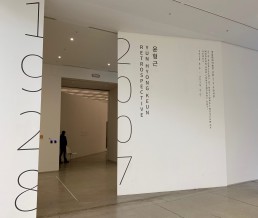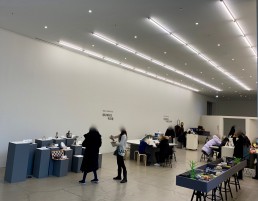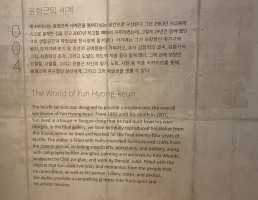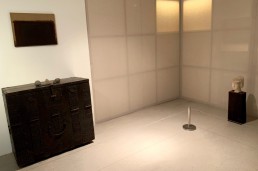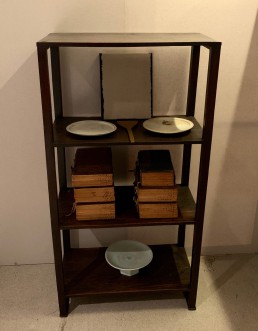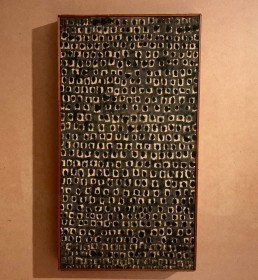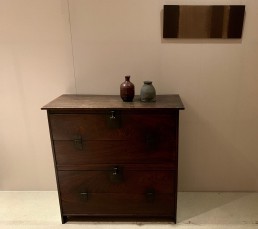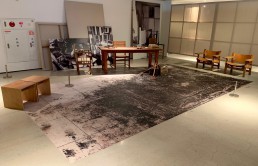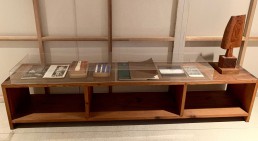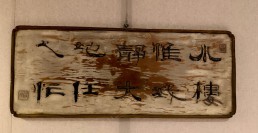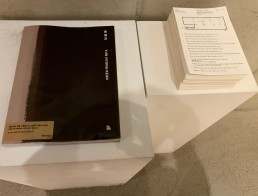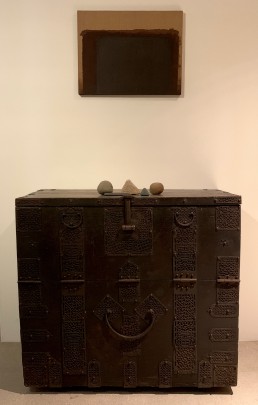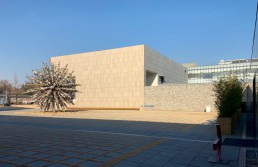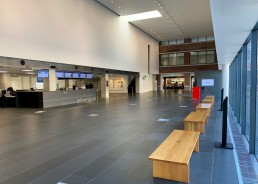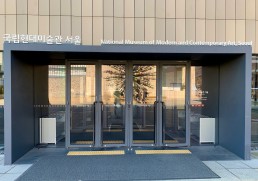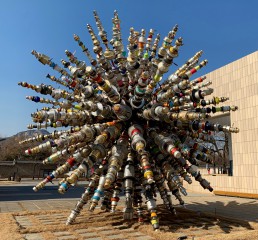Het National Museum of Modern and Contemporary Art van Seoul ligt vlakbij, op loopafstand van het grote tempelcomplex van Seoul, Changdeokgung. Erg handig om te combineren. In de buurt van het museum vind je ook een aantal galeries met moderne kunst, dus die kun je er ook nog bij pakken als je zin hebt. Alles is erg goed te doen met de metro, maar taxi’s zijn ook prima en niet heel duur.
Het MMCA is een groot museum met drie verdiepingen en er wordt veel georganiseerd, workshops en dergelijke, activiteiten voor kinderen, dus het is een levendig en actief museum. Toen ik er was, was de Duchamp expositie er en die had ik al in Tokyo gezien een paar maanden geleden, dus een groot gedeelte kon ik helaas overslaan. Er was een overzichtstentoonstelling van een beroemde Koreaanse schilder, Yun Hyong-Keun. Ik had eerlijk gezegd nog nooit van hem gehoord, maar zijn werk en vooral zijn leven is zeer interessant. Zijn werk zie je dus vooral in deze post. Het lijkt wat eenzijdig, vooral zijn latere werk, maar er zit een duidelijke filosofie achter en dan wordt het eigenlijk steeds krachtiger en begrijpelijker.
Meer over Yun Hyong-Keun verderop in deze post.
Yun Hyong-keun (1928-2007) was amongst the leading figures of the Korean Dansaekhwa art movement. Inspired by nature and influenced by the work of the scholar and calligrapher Kim Jeong-hui, Yun’s paintings combine a palette of umber – the colour of earth – and ultramarine – the colour of water – to create rectilinear compositions, reminiscent of traditional ink-wash paintings. Diluted with turpentine Yun spread pigment across the canvas, layering it over days, weeks or months to create fields of intense darkness. His paintings embody time through an accumulation of procedures enacted in different encounters with the work in the same space. Each layer of pigment seeps into the fibres at a different rate, resulting in blurred edges along the unmarked expanses of canvas. In the 1990s, these boundaries gradually became more defined, eventually sharpening into hard edges in the final decade of the artist’s life.
In recent years Yun’s work and his contribution to Dansaekhwa have come under renewed study. His works characterise the elements of tactility, spirituality and performance common to first generation Dansaekwha artists, including Chung Sang-Hwa, Ha Chong-Hyun, Chung Chang-Sup, KIM Whanki and Park Seo-Bo. Emerging from a period of international isolation brought about by the Korean War (1950-1953), their work reflected Korean sentiments and aesthetics via an investigation into flatness, materiality and mediation in art making. Rhythmic actions repeatedly performed on the canvas were intended to build a sense of unity between materials, object and the self. While never a movement in the traditional sense – the activities of those associated with the school of Dansaekhwa were ideologically and practically diverse – the artists’ shared a common commitment to the materiality and act of painting. Offering a counterpoint to the Minimalist vocabularies propagated in Western painting of the same time, Yun’s monochromatic abstractions resonate both across his own culture and with key artists in the history of American and European abstraction (Bron: simonleegallery.com)

